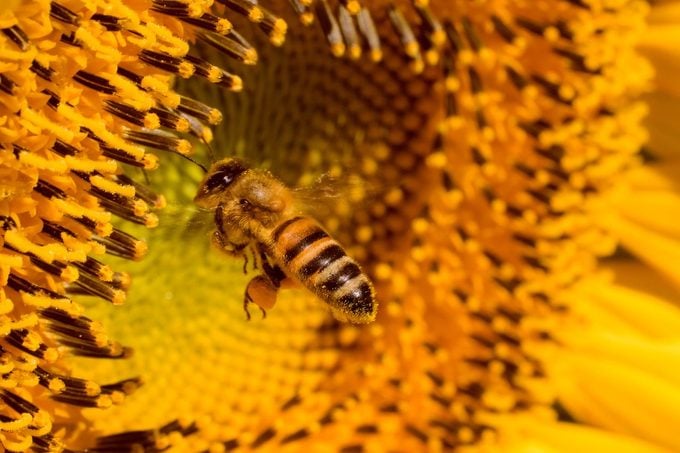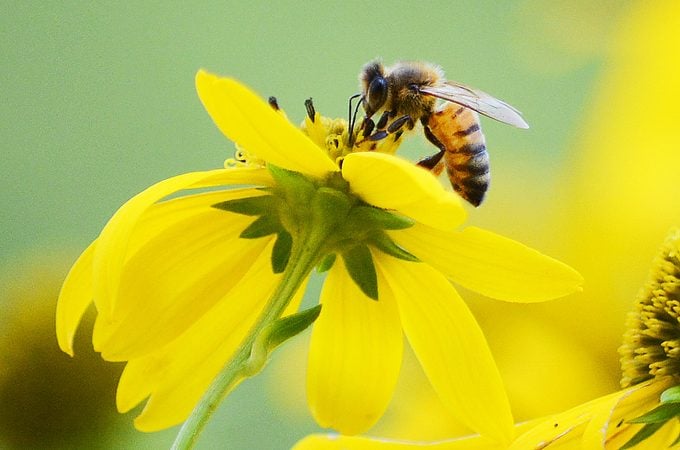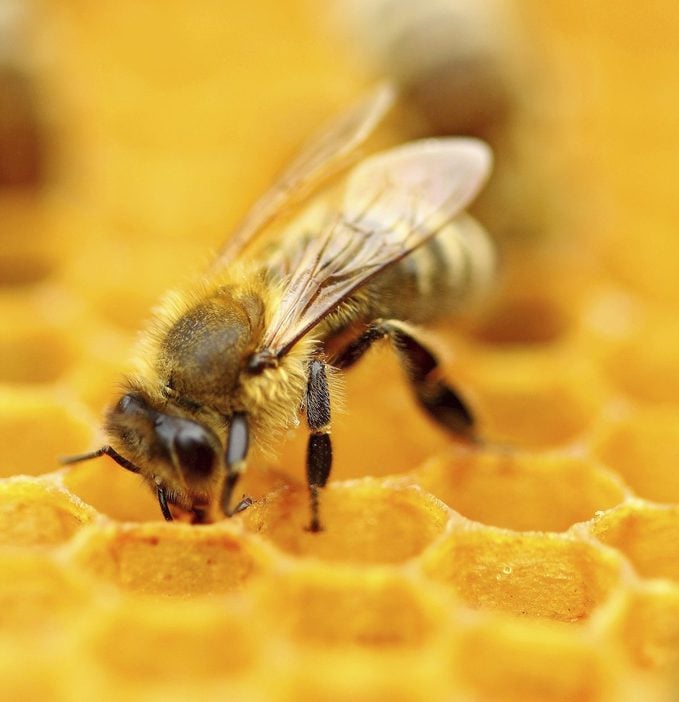8 Sweet Honey Bee Facts You Should Know
Updated: Mar. 19, 2024
Get the buzz with amazing honey bee facts. Get answers to frequently asked questions about these honey producing pollinators.
On This Page
Why Are Honey Bees Important?

Pollinators like honey bees are crucial in agriculture, affecting one out of every three bites of food we eat. So it’s important for gardeners to support them. Grow native plants and avoid insecticides!
Learn fascinating facts about bumblebees.
What Do Honey Bees Look Like?

Honey bees have four wings and six legs. Their bodies are golden yellow with brown bands. The queen is larger than the other honey bees. Her wings only cover two-thirds of her body.
Learn to spot the key differences between bees and wasps.
How Fast Do Honey Bees Fly?
Honey bees can fly up to 20 mph. Their speed and stamina allow them to forage for pollen up to 2 miles away from the hive.
Discover easy ways to help the bees.
How Are Honey Bees Born?
Queen bees are the only females that reproduce. The pheromones they release prevent worker bees from making eggs, so the queen remains the mother and star of the hive. On any given day, a queen bee is able to lay up to 2,000 eggs.
Should you provide drinking water for bees?
How Long Do Honey Bees Live?

The life span of a bee depends on where it falls within the colony. Queens live up to seven years; workers born in spring or early summer live only five to six weeks.
Check out the best flowers that attract bees.
Where Do Honey Bees Live?
Honeybees live in hives. Each hive has a very strict social structure composed of three groups: queens, workers and drones. There’s only one queen in healthy hives, plus 2,000 to 60,000 female workers that collect pollen and keep the hive running, and up to 500 larger male drones whose main job is to mate with the queen bee.
Learn how to keep bees and wasps away from hummingbird feeders.
Are Honey Bees Native to North America?
There are more than 20 subspecies of western honey bee, none of which are native to North America. They spread here after being brought from Europe, the Middle East and Africa.
Does a Honey Bee Have a Stinger?
Yes, honey bees can sting but it comes at a high cost. When a honey bee stings a human or animal, its barbed stinger stays in its victim, and the bee eventually dies as a result. Remove the stinger as quickly as you can to minimize pain.
In contrast, wasps and bumblebees can sting you multiple times. Native, solitary bees such as mason bees tend to be more docile because they are not defending a hive.
After you finish reading about these honey bee facts, meet more of the beneficial bees you want in your garden.
Sources
- University of Florida, Institute of Food and Agricultural Sciences
- National Library of Medicine
- University of California Cooperative Extension
- Canadian Honey Council
- University of California Division of Agriculture and Natural Resources
Why Trust Us
For nearly 30 years, Birds & Blooms, a Trusted Media Brand, has been inspiring readers to have a lifelong love of birding, gardening and nature. We are the #1 bird and garden magazine in North America and a trusted online resource for over 15 million outdoor enthusiasts annually. Our library of thousands of informative articles and how-tos has been written by trusted journalists and fact-checked by bird and garden experts for accuracy. In addition to our staff of experienced gardeners and bird-watchers, we hire individuals who have years of education and hands-on experience with birding, bird feeding, gardening, butterflies, bugs and more. Learn more about Birds & Blooms, our field editor program, and our submission guidelines.






















